Barbie has lots of new knit and crochet spiral dresses.
In maths there are very specific definitions for some kinds of spirals. You can find lots of information about mathematical spirals on the internet. Some of them refer to ‘circling round a centre point’ but you will also find square, hexagonal and other shaped spirals. In everyday language we refer to anything that goes round and round as a spiral – even though it may not be round.

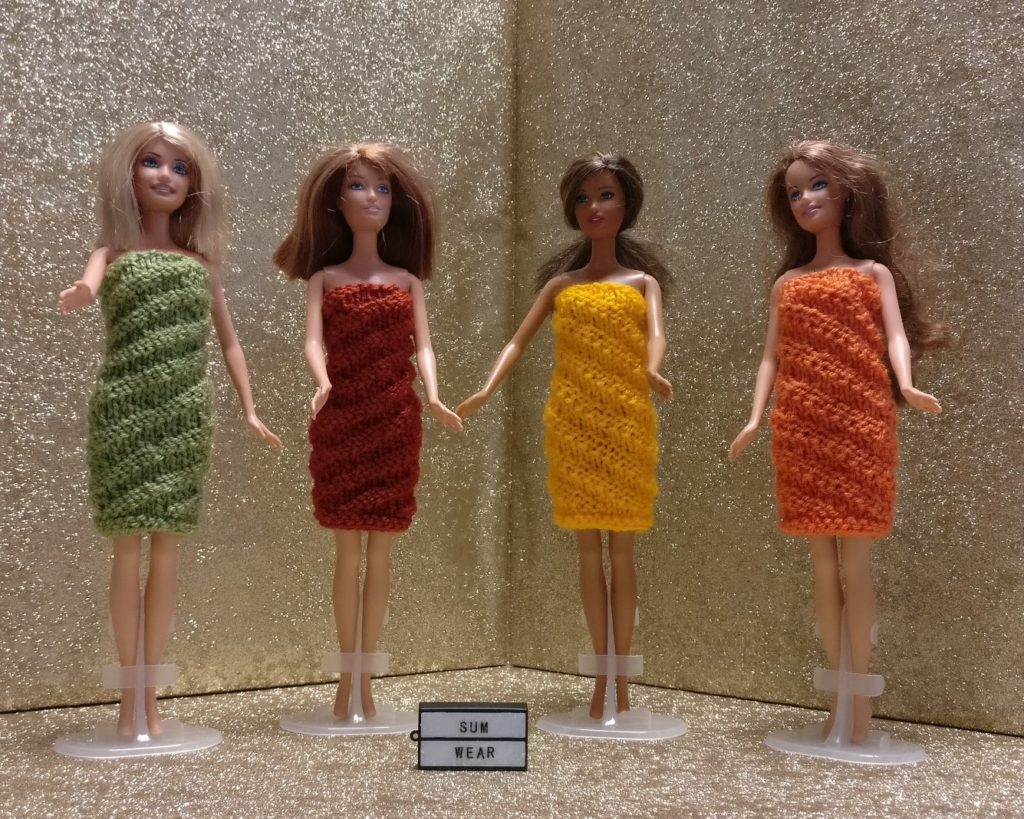
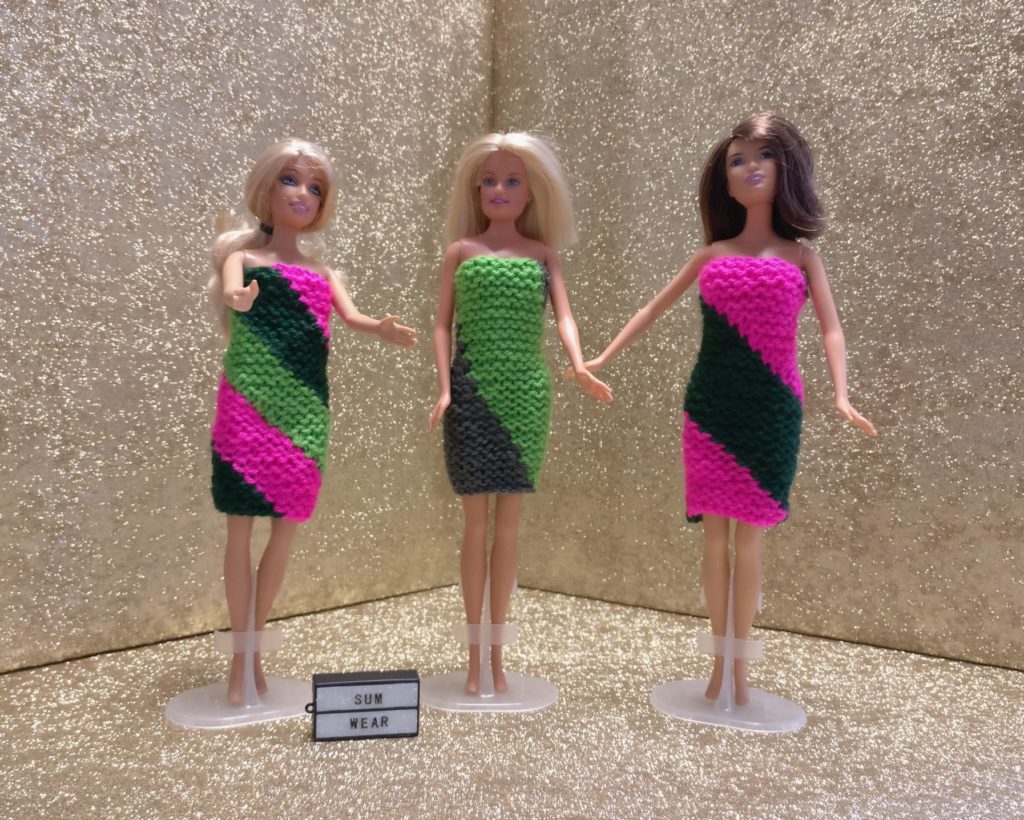
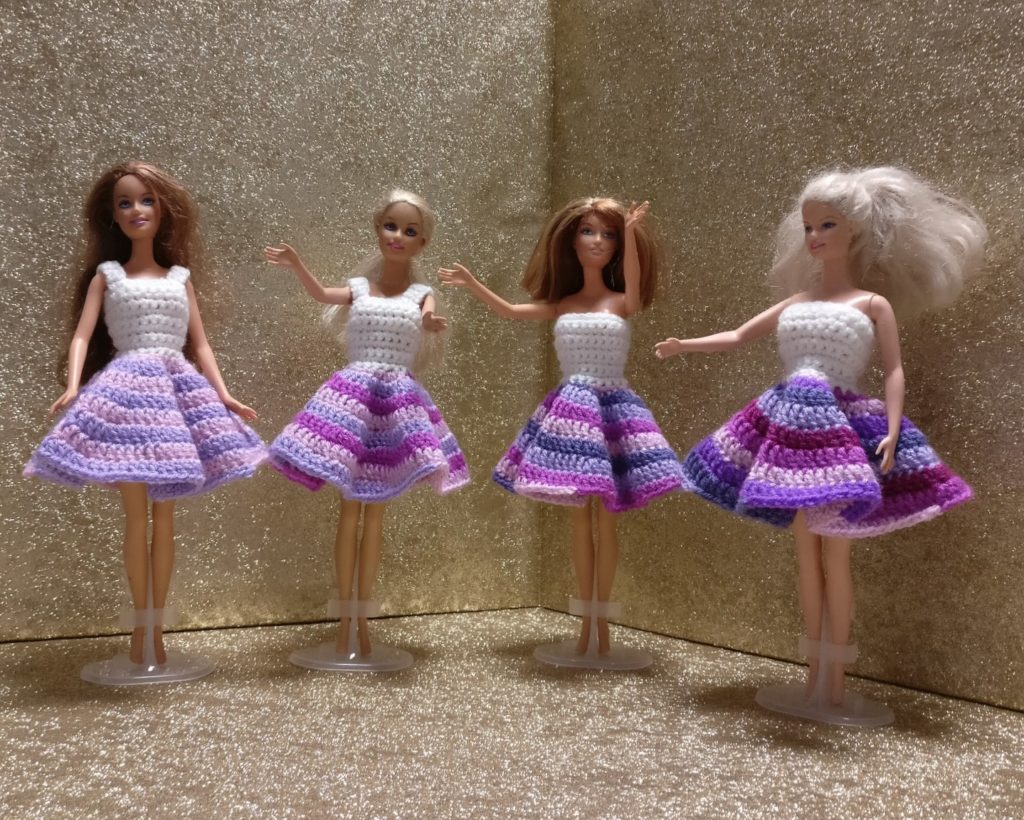
Barbie’s dresses are different kinds of ’round spirals’. They fall into two main categories – those that are flat and spread outwards to form a shape very like a circle, and those that go upwards to form a cylinder shape. Barbie dresses are small so they are perfect for experimenting with new ideas that could then be used on bigger things like hats, bags, cushions, sweaters, etc.
Flat spirals
These dresses are worked in treble crochet. When you work in trebles you need to add 12 trebles in each round to keep the shape flat. If you want to make a hat, coaster, or something similar, you would begin with 12 stitches worked into a ring then keep adding 12 stitches on every round. Barbie’s spirals begin at her waist with 24 stitches. It is best to use 2, 3, 4 or 6 colours because the stitches can be divided easily into these numbers of sections.
Many people think you need to add more and more stitches as the circle gets bigger. This is not true. You only ever need 12 extra stitches even if you are making something as big as a blanket. To make a large circle look ’rounder’, stagger the extra stitches so they don’t lie in lines above each other. Barbie’s dress is not big enough to worry about this.
Treble stitches are quite tall so, as each colour is introduced, the heights of the stitches need to be gradually increased so they can wrap over each other. Start with a few double crochet, then some half-trebles and, eventually, the trebles.
To make Barbie’s skirts softer and more floppy, use a bigger hook but don’t change the stitches.
Spirals don’t have to be in trebles. If you use other stitches the number to add on each round is different:
Double crochet – add 6 stitches on each round
Half trebles – add 8 stitches on each round
Double trebles – add 18 stitches on each round.
Multi-colour cylinder spirals
Making a spiral cylinder isn’t much different from making a plain cylinder. The number of stitches for the cylinder has to be a multiple of the number of colours so the stitches can be divided evenly. The 2-colour spiral begins with 11 stitches of each colour (22 in total). The 3-colour spiral begins with 7 in each colour (21 in total). However many colours you use you need to begin with small stitches and gradually change to taller stitches, similar to the beginning of the flat spirals. This would also apply if you were only using one colour. Once the stitches are the right height, just keep going round and round, always working into stitches of the previous colour.
The 2-colour dress worked in double crochet has less obvious spirals because the stitches are smaller. The knitted dress is even less obvious.
Single colour spirals
All knitting in the round is technically a spiral. If you are going round and round with no breaks you are making a spiral. In most cases this is not noticeable. If you want the spiral to stand out it has to have some kind of texture. All four dresses below use the same basic rib pattern but it moves across by one stitch on every round.
The two on the left spiral in one direction, the two on the right go the opposite way. You could describe these as clockwise and anti-clockwise. I prefer to call them forwards and backwards because, as you are knitting they are moving in those directions.
All dresses are worked in a 3 x 3 rib. A cylinder would have to be a multiple of six stitches. Surprisingly the dresses on the left (orange and yellow) have two fewer stitches than those on the right (green and brown). The ‘forwards’ dresses have 23 stitches. Because the spiral is always moving forward, the 24th stitch needed to complete a round is the first stitch of the new round. Conversely the ‘backwards’ spirals would be one stitch short at the end of the round so need to have 25 stitches.
Many people think that if you look at a spiral from the other end it turns the opposite way. When there are problems with yarn, I have often heard people suggest using the ball from the other end because the twist is different. This is not true. Turn Barbie upside down and you can see the spiral is the same. This is also what happens to the yarn. When Barbie’s dress is turned inside out the spiral is reversed.
Toilet roll spirals
The centre of a toilet roll is a flat piece of card wrapped round to make a tube. It is very easy to get confused about the direction to knit to make a similar spiral to wrap round Barbie.
The angles of the knitted spirals are not the same as the card. When the colour is moved across by one stitch on each garter ridge it automatically creates a 45 degree angle. When it is moved across by one stitch on alternate ridges it makes a much steeper angle, approximately 63 degrees.
You will find many other spirals at woollythoughts.com Here are some of them:

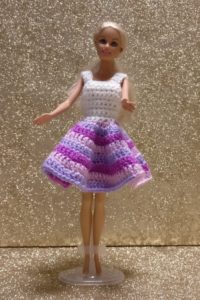
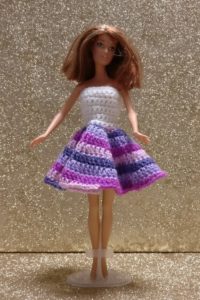
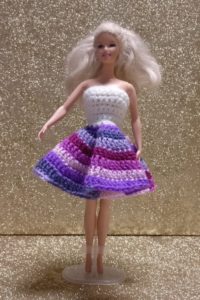
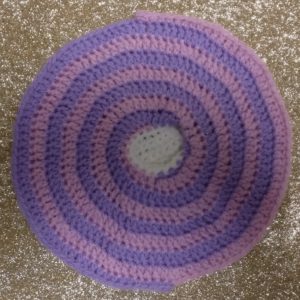
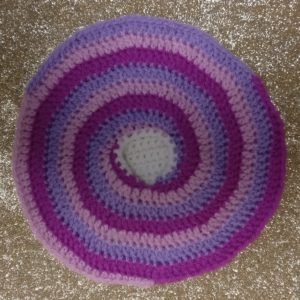
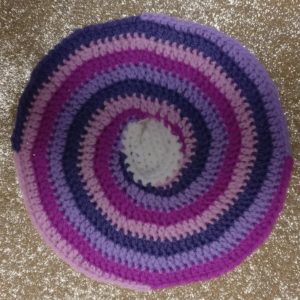
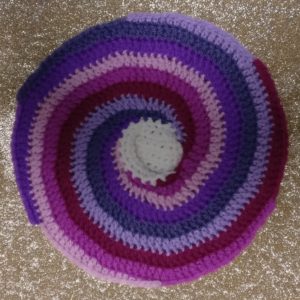
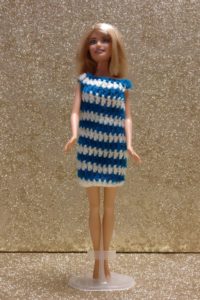
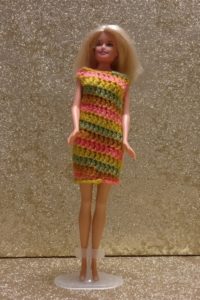
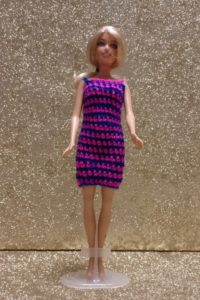
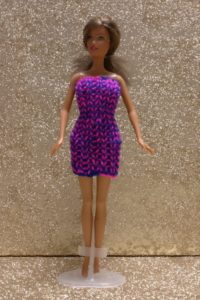
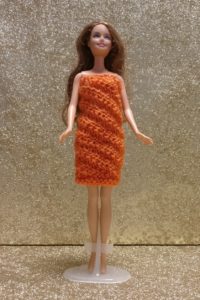
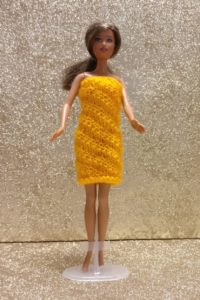

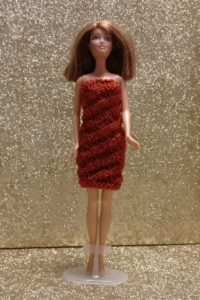
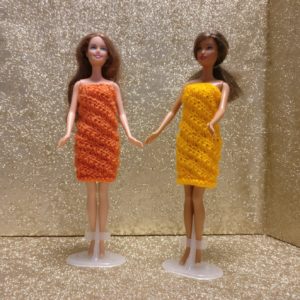

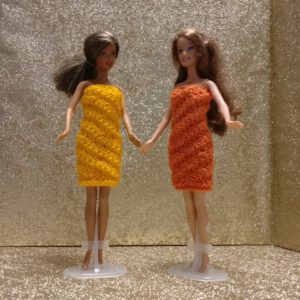
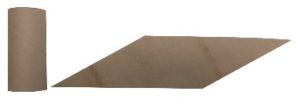
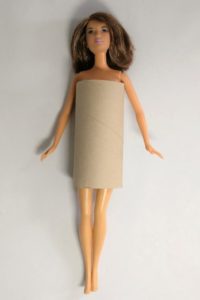
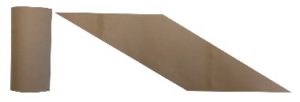
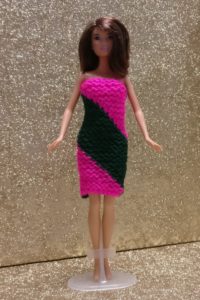
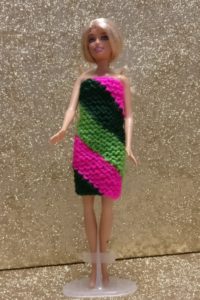
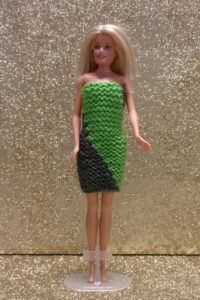
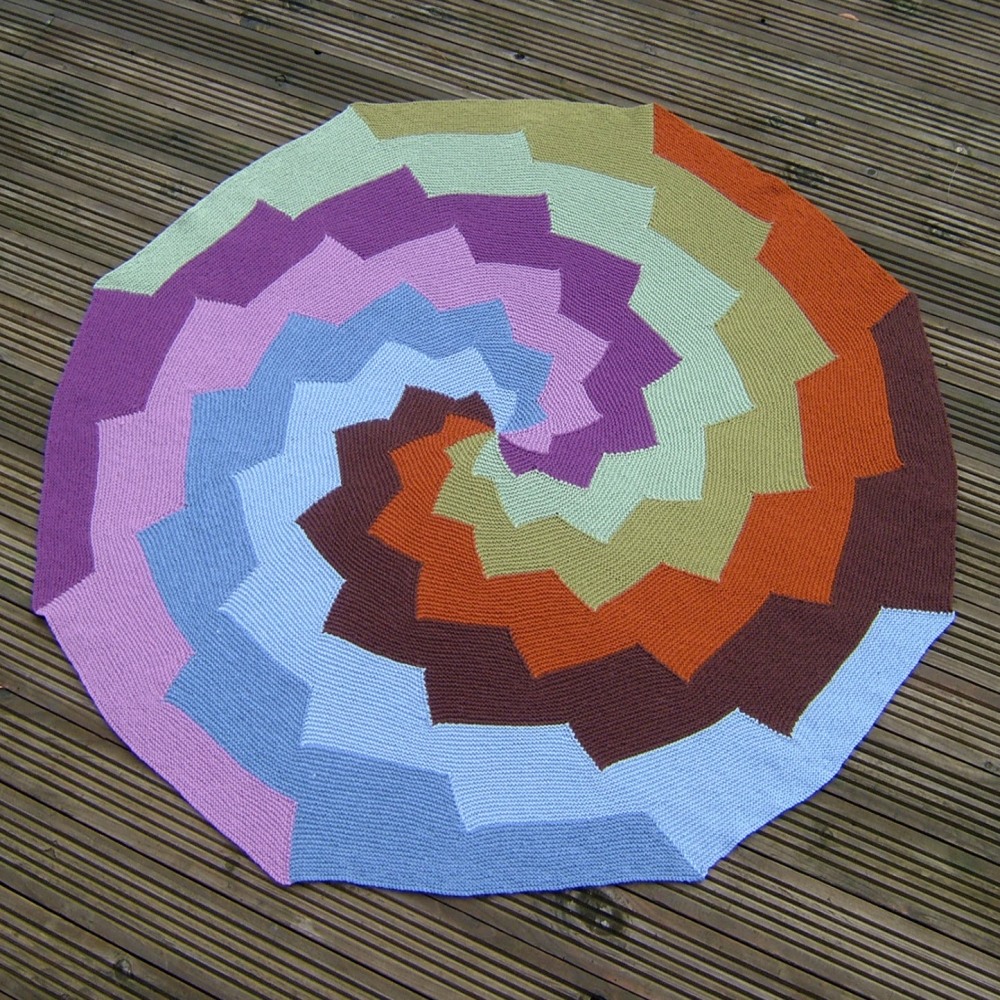
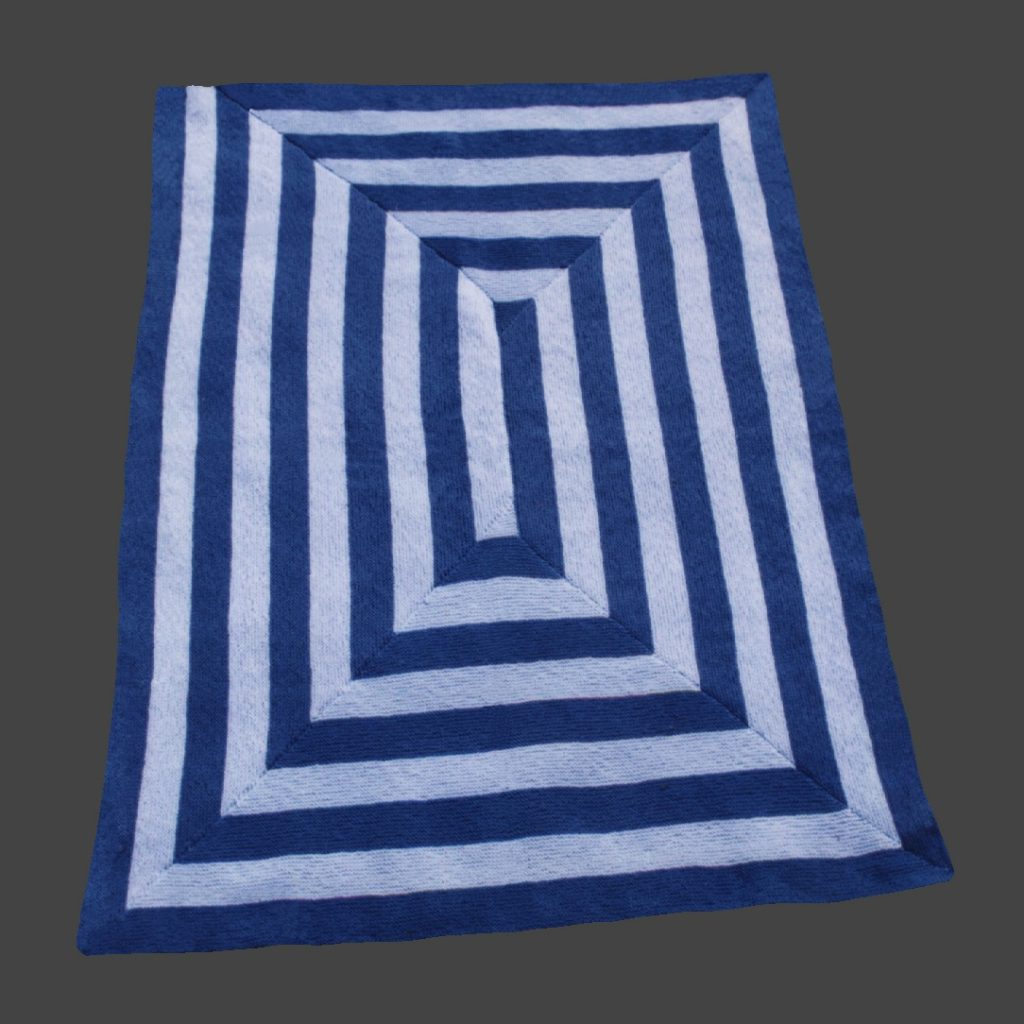
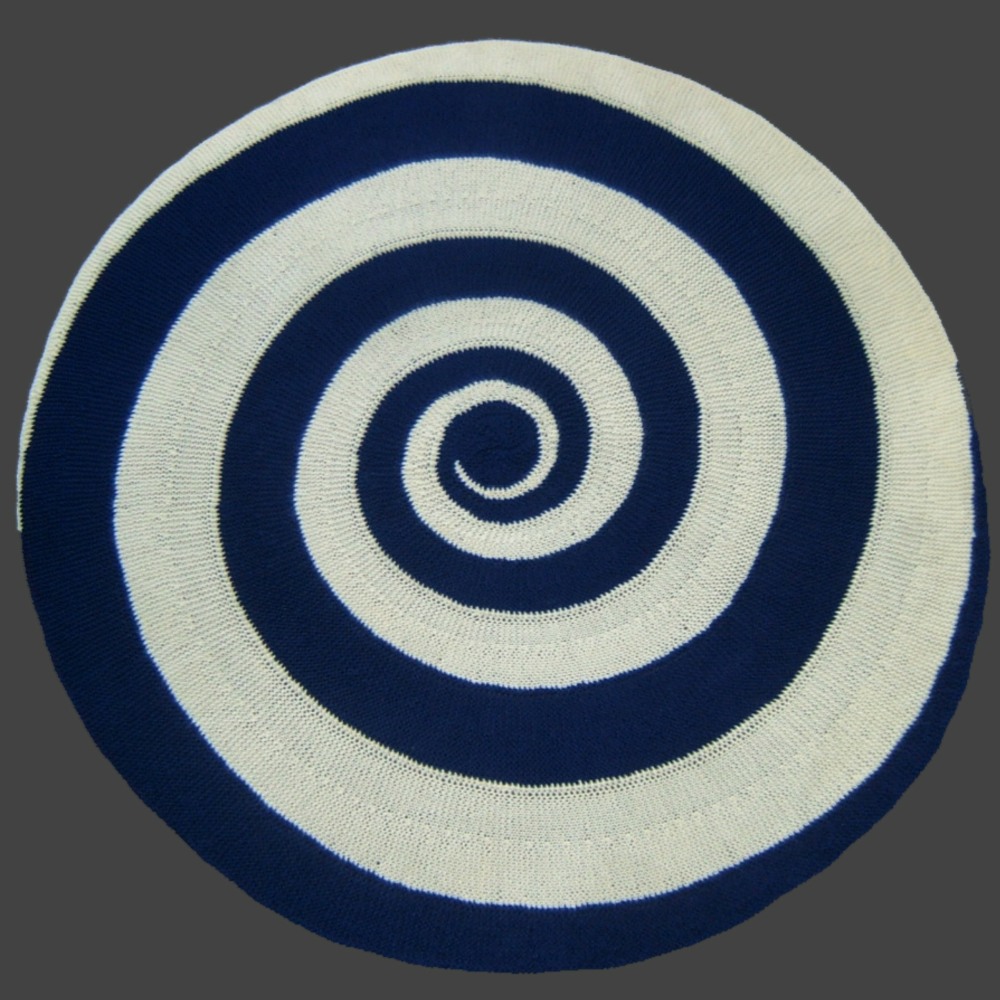
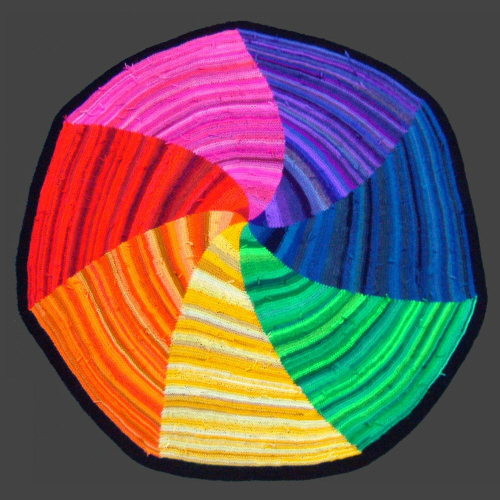
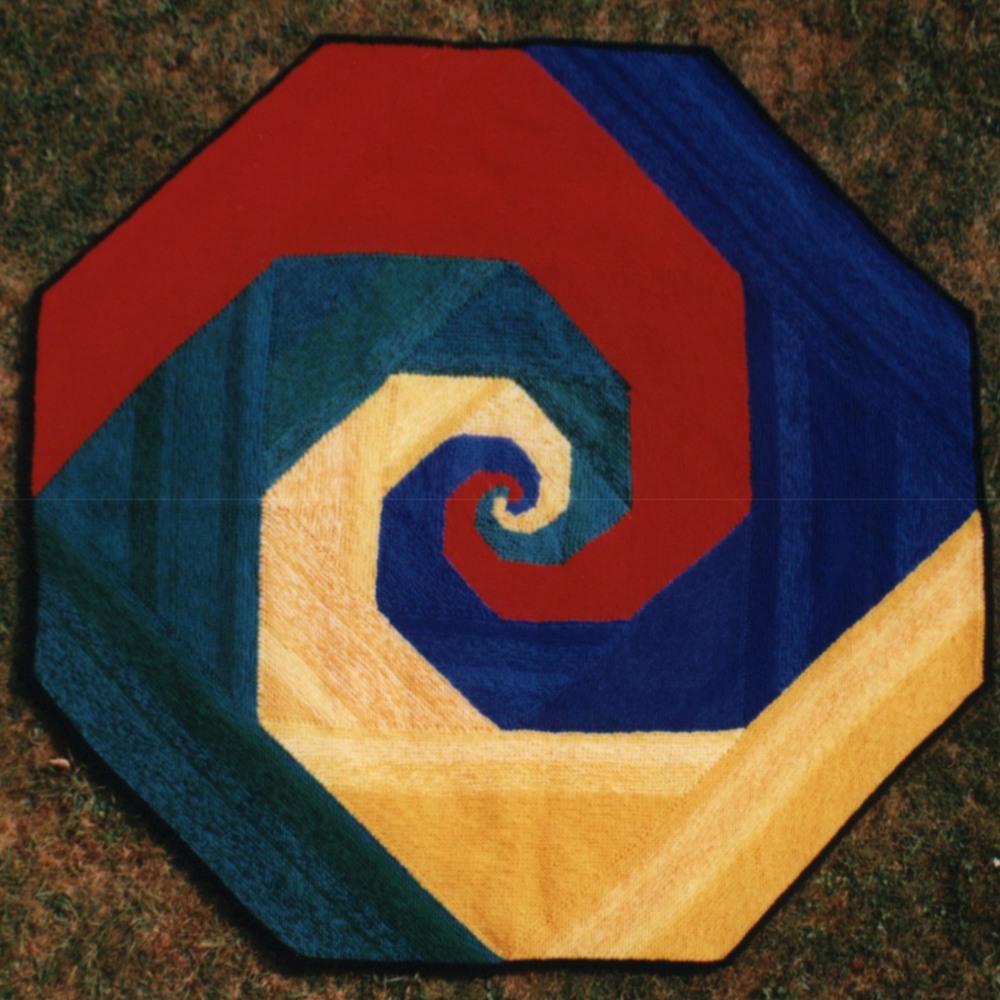
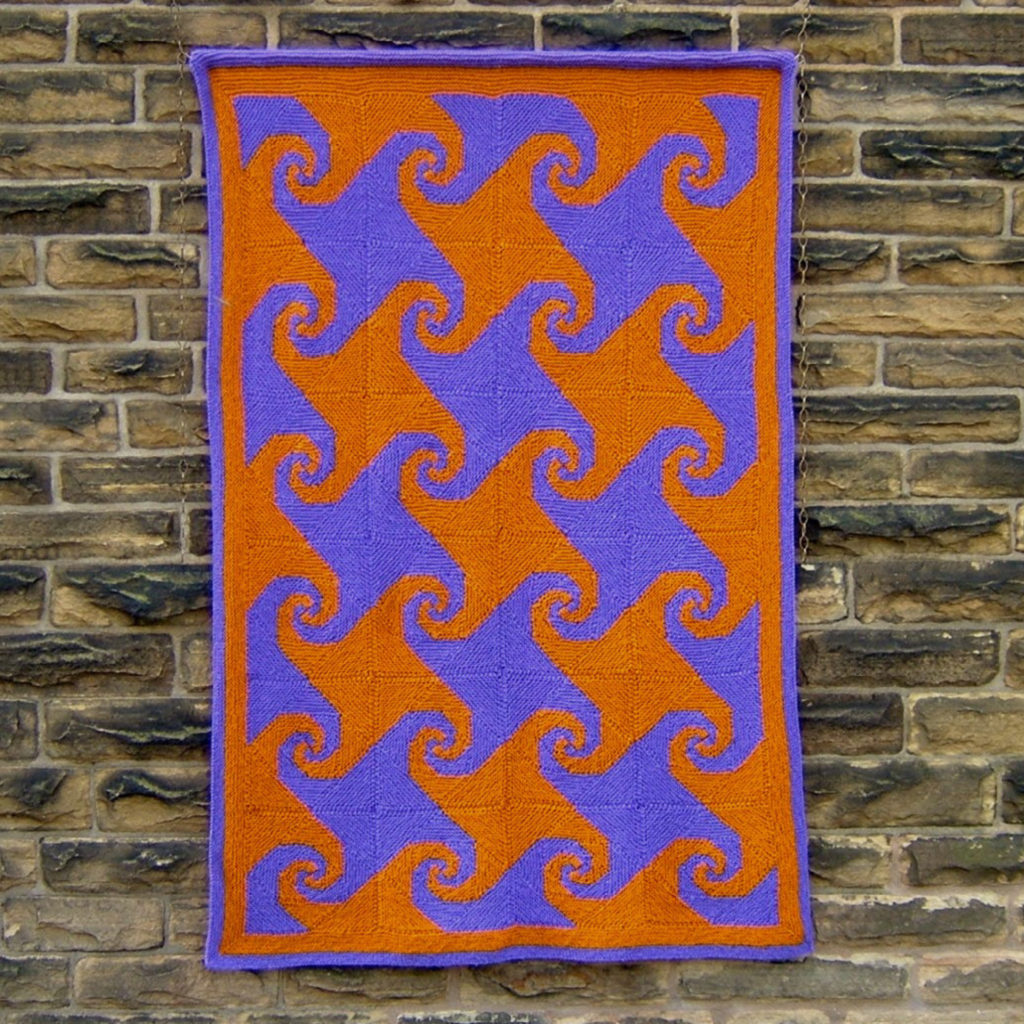
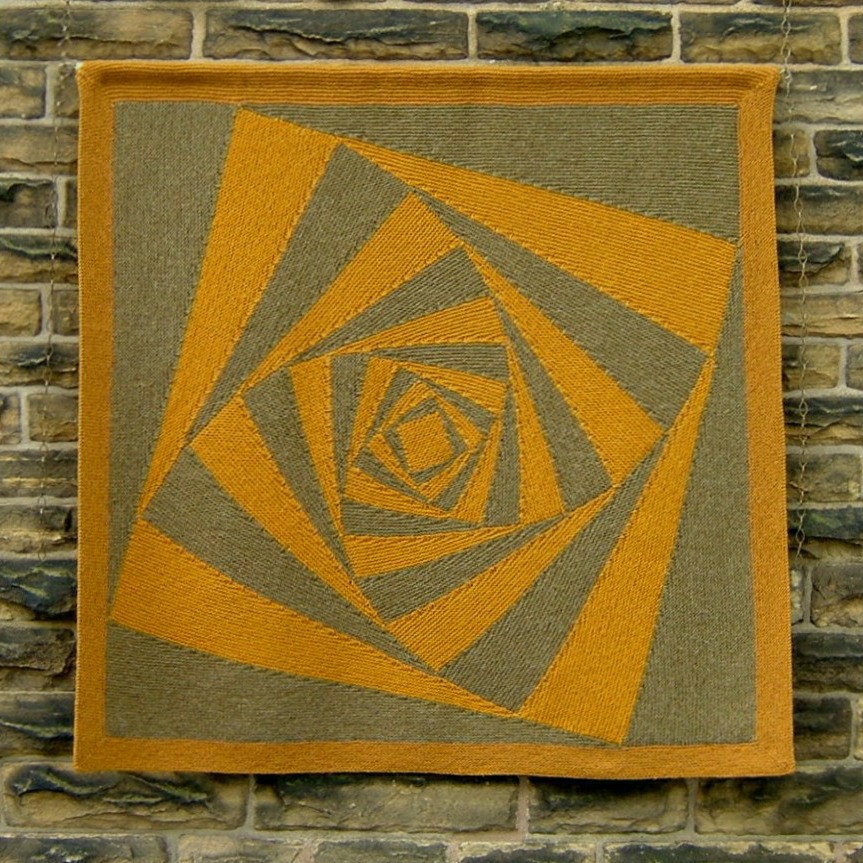
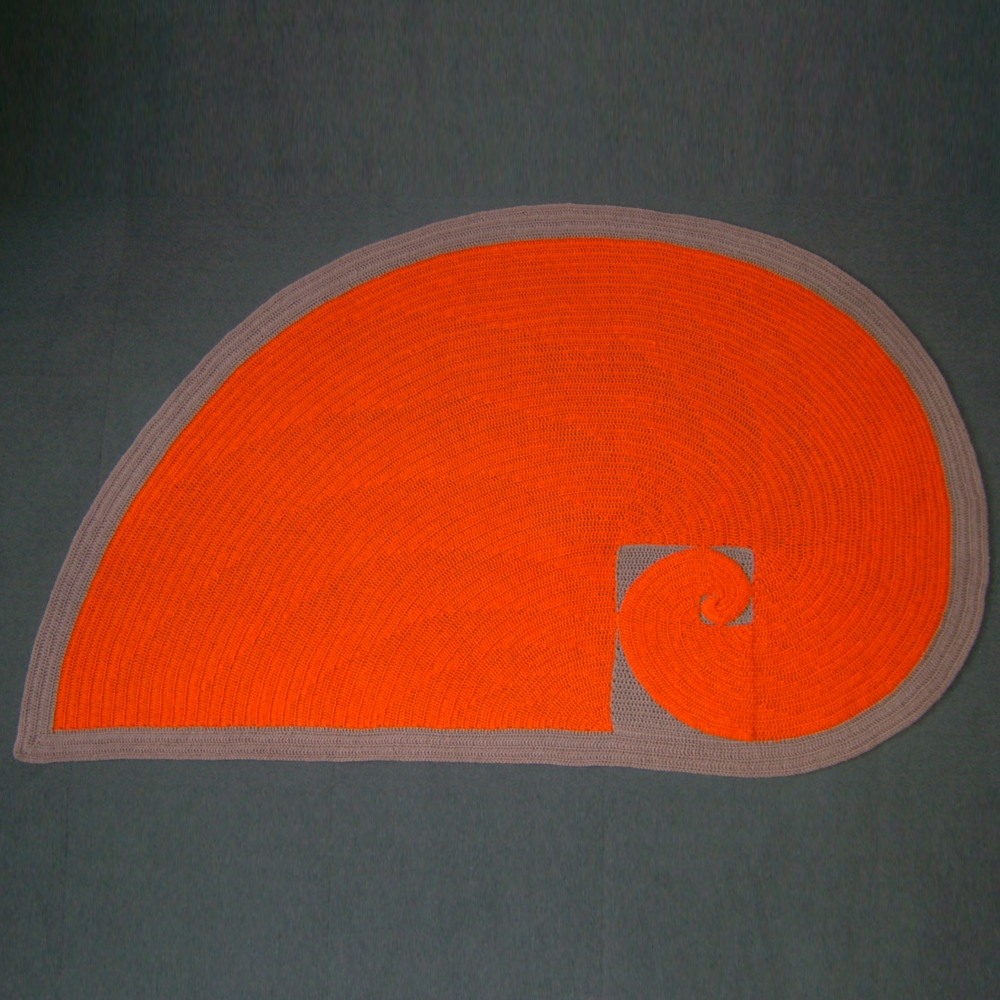
And remember these crochet terms are the UK standard. For US, translate as follows:
UK treble=> US double crochet
UK half-treble=> US half double crochet
UK double=> US single crochet
True. Thank you.